 Since the publication in English of Yukio Mishima’s 1954 The Sound of Waves, an uncharacteristically romantic novel of young love flowering on an islet in the Seto Naikai, there has been a fondness for visualizing the Inland Sea and its islands of olives, oranges, sunburnt fisherfolk, and midday siestas, as somehow Mediterranean in flavor, its water passages carrying the traveler on an Ionian journey.
Since the publication in English of Yukio Mishima’s 1954 The Sound of Waves, an uncharacteristically romantic novel of young love flowering on an islet in the Seto Naikai, there has been a fondness for visualizing the Inland Sea and its islands of olives, oranges, sunburnt fisherfolk, and midday siestas, as somehow Mediterranean in flavor, its water passages carrying the traveler on an Ionian journey.
Nancy Phelan, in her 1969 travelogue Pillow of Grass, was similarly moved, the writer finding “Figs, persimmons, mandarins, and pomegranates,” ripening around tiered olive-groves, redolent of Greece, with its “fine filtering dust and glaring sun.”
Donald Richie’s classic The Inland Sea also contains a little of this longing for an antique land, a place whereupon “somewhere near the seaÉ I will find them: the people the Japanese ought to be, the people they once were.”
Its surface the dull silver of a shrine mirror, the Inland Sea easily inspires moments of somber poetic meditation. In the tiny port of Tomo-no-Ura at the very extremity of Numakuma Peninsula, a town located far enough south for cacti and yet close enough to the current of things to display a few signs in English, one may savor the smell of the sea, the sound of squawking gulls and the sight of kites wheeling over the temple roofs.
One may also savor fleeting images of history. The warrior Masashige passed through here on his way to Kyushu, as did the Empress Jingu en route to Korea and straggling bands of the defeated Heike clan. The town even gets a mention in the eighth-century anthology of poetry known as the Manyoshu.
Given its permanent seaside location, Tomo-no-Ura has not entirely escaped Japan’s post-war uglification program Ð as some of its cement installations testify. The town seems to have had its last flirt with concrete in the eighties, however, and then mercifully left it at that.
It is difficult to know with any degree of certainty whether the preservation ethic is triumphing over modernity or just the economy, but the village remains largely a creation in wood Ð and all the better for it. Where there is concrete, it has generally been put to good use. A raised cement crescent, reinforced with rows of tetrapods, has sealed the harbor against the very real threat of flooding and destruction from the typhoon-driven seas that pound these shores. The platform provides just enough space for weekend fishermen to spread out their tackle, lunch boxes and small plastic buckets of bait.
The waters here are abundant in sea bream, a local specialty. I also saw octopus, caught on lines rather than pots or nets, being hauled from the water just below the sea walls, gleaming and full of life. The raised bund also provides space for women to set up stalls under temporary plastic roofing, where the local catch is displayed and tasty fare sold. Shrimp are dried on racks, some of them placed along the sea walls, others on ambulants that have been wheeled into shrine precincts. These are sold direct from their drying frames, street stalls, or from the doorways and entrance halls of private homes, conveying the largely accurate impression that most of the inhabitants of this village are engaged in one way or another with the sea.
One imagines the good folk of this port living to a ripe old age. This was corroborated by Mr Shimizu, the proprietor of a ramshackle general store where I stopped to buy a cheap Ozeki ring-pull bottle of sake to go with my shrimp. A sprightly 60-something, I thought, only to discover his age to be 84. The secret? Fish, seaweed and green tea, naturally Ð a rhetorical question in this land of longevity. An unapologetic landlubber, I was glad, somehow invigorated, to be among these gentle, resilient people.
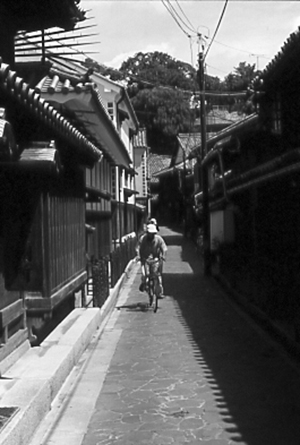 The ferries may have shrunk to just one or two, but Tomo-no-Ura remains a working port. To see the town engaged in what it has always done, head to the horseshoe-shaped harbor where the morning catch is brought. The sea bream netting often on display is a re-enactment of a traditional fishing method that can also be glimpsed in simulated form in models and photographs at the Tomo-no-Ura Museum of History. From the museum grounds, a commanding view of gray, undulating ceramic roofs, their eaves interlocking, suggests a community that is also tightly knit. Donald Richie, a profoundly attentive traveler, described the town at the end of the sixties as having “the casual look of most towns where progress has been late in arriving. It is a crosswork of little streets like those in Italian mountain villages.”
The ferries may have shrunk to just one or two, but Tomo-no-Ura remains a working port. To see the town engaged in what it has always done, head to the horseshoe-shaped harbor where the morning catch is brought. The sea bream netting often on display is a re-enactment of a traditional fishing method that can also be glimpsed in simulated form in models and photographs at the Tomo-no-Ura Museum of History. From the museum grounds, a commanding view of gray, undulating ceramic roofs, their eaves interlocking, suggests a community that is also tightly knit. Donald Richie, a profoundly attentive traveler, described the town at the end of the sixties as having “the casual look of most towns where progress has been late in arriving. It is a crosswork of little streets like those in Italian mountain villages.”
Tagashima-jo, the ruins of an old castle that once stood on the headland above the harbor, and its adjacent temple, Empuku-ji, offer another angle on the town. Here you can glimpse the harbor to the west and Benten-jima, a tiny island, to the east. Of Indian provenance, the goddess Benten is a sensuous figure, now firmly inducted into the Shinto pantheon and serving as the patroness of music, the arts and beauty, the only female among the seven deities of good fortune. She is often depicted playing a four-stringed lute beside the water, which may explain why Benzaiten shrines are often found on islands.
Half the enjoyment of this little town, where it is still possible to lose your bearings, is to explore its labyrinth of lanes and stone alleys, noting the old wooden houses, ship’s chandlers and bijoux gardens glimpsed behind time-worn fences. One area of streets near the harbor contains the Shichikyo-ochi Ruins, a misleading name for what turns out to be a graceful ensemble of wood and plaster sake breweries and warehouses dating from the mid-18th to 19th centuries.
Given the small population of the village, there are a seemingly disproportionate number of well-endowed temples, some replete with their own graveyards, suggesting a high fatality rate among fisherfolk. In traditional fishing communities like this, death stalks even the calm surfaces of the Inland Sea. Judging from the number of miniature spirit houses set above the waterline and at the bay heads in homage to whatever deities can be induced to bring fishermen home from sea, the locals are taking no chances.
There is a lot of divinity in one form or another in Tomo-no-Ura. For such a small place, its architectural heritage is impressive. Io-ji was supposedly founded by Kobo Daishi, a priest who, if only half the temples that claim a connection can be believed, must have been one of Buddhism’s most itinerant pilgrims. Nunakuma-jinga is a shrine with an impressive noh stage that was once taken to battlefields as one of the props used in the elaborate entertaining of the warlord Hideyoshi Toyotomi.
Ankoku-ji, at the north end of town, houses two gold-flecked wooden statues, one of the Buddha, the other Amida. Languishing behind the temple, beneath the rusting tracks of a long disused railway line, it is one of the most clumsily composed and under-maintained stone gardens I have seen in Japan. Fukuzen-ji, a reception hall located near the ferry terminus and once used to receive Korean missions, inspired flights of calligraphy from envoys such as the man of letters I-pan-o, who were overcome with the beauty of the view. Only slightly disfigured by small concrete installations and power lines, it remains largely intact.
Change has come to this port as it has been absorbed into the administrative embrace of Fukuyama. It would be misleading to portray the town as a time-capsule of crusty fisher folk, but then change is a relative matter and as far as this diminutive headland with its temples, rocks and gnarled pines goes, it has fared a lot better than other places on the Seto Naikai.
The good folk of Tomo-no-Ura, despite it all, are still companions of the sea.
Story & photos by Stephen Mansfield
From J SELECT Magazine, September 2007

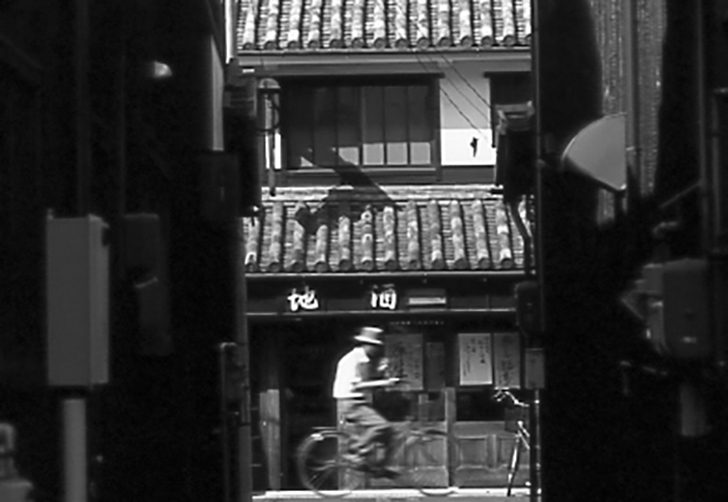

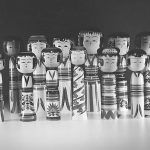

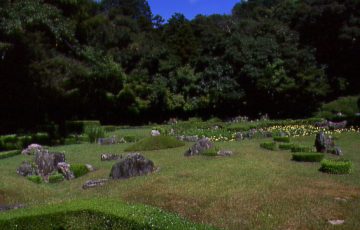

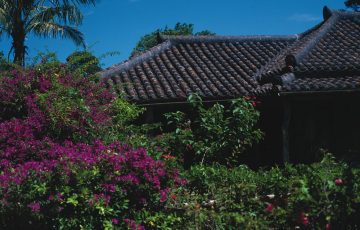
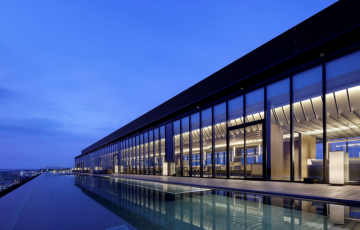
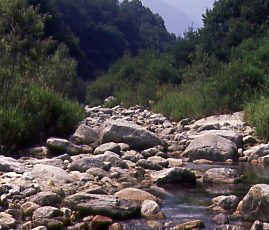
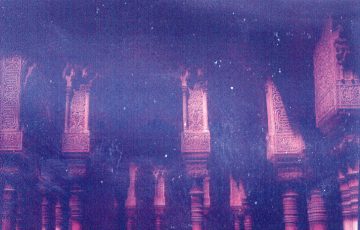
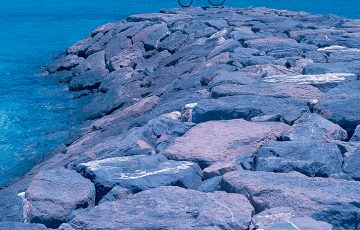



Recent Comments